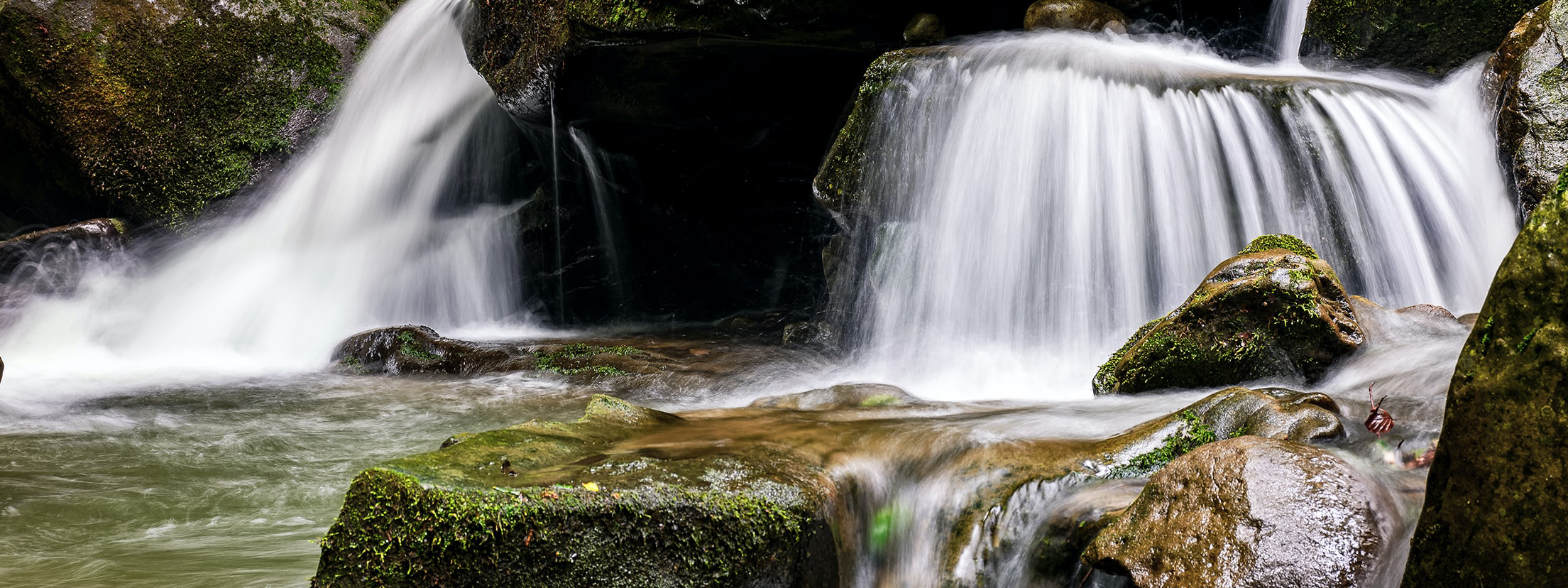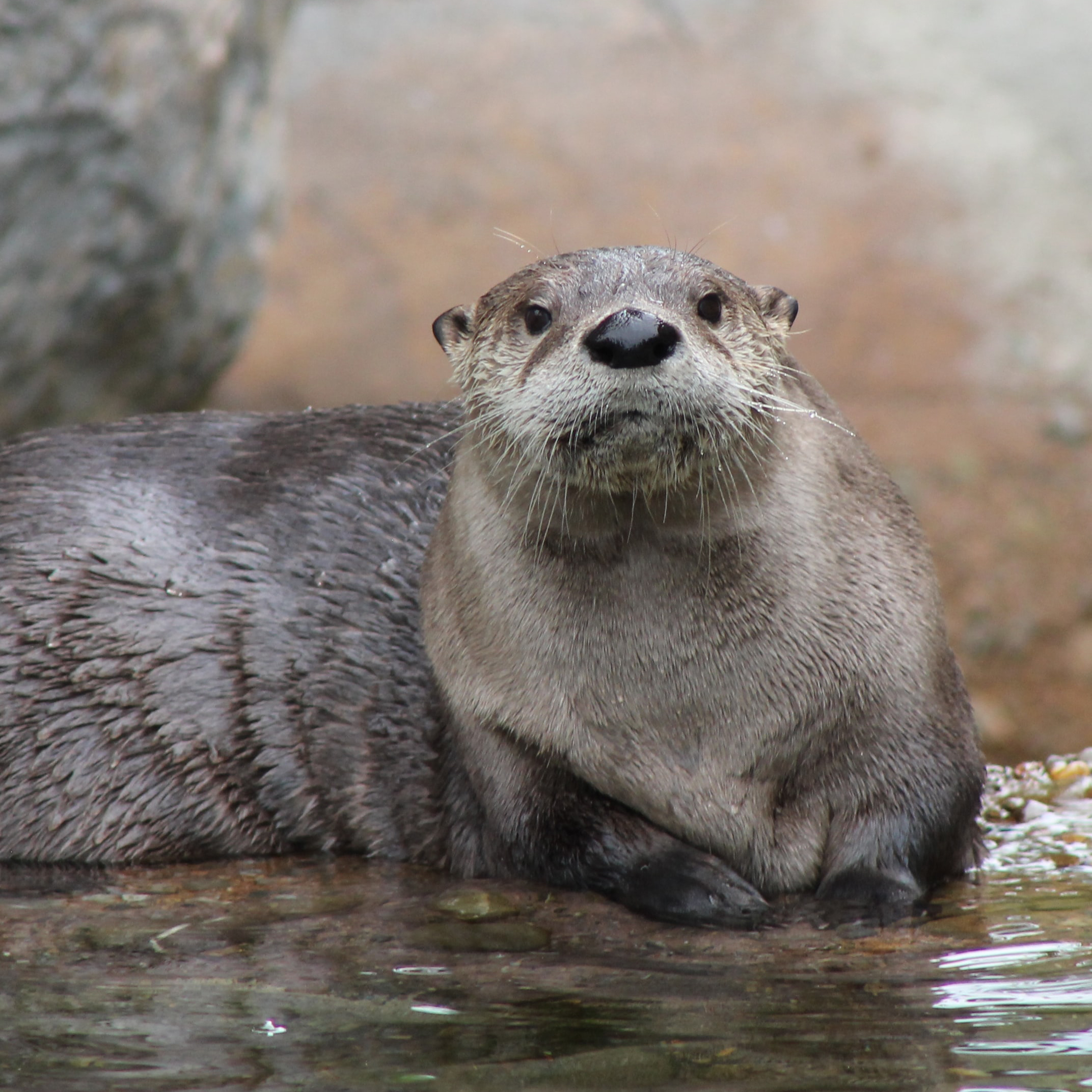
By John S. Mogabgab
“The nursing child shall play over the hole of the asp” (Isa. 11:8, NRSV). This familiar image of a vulnerable human living in peace with a dangerous wild animal anticipates the time when enmity and harm between nature and us will pass away. Like other such biblical images, this one points to a future yet to be fully realized and a present yet to be fully embraced. Perhaps you have glimpsed hints of this possibility that offer clues to the meaning of being stewards of creation.

Summer afternoon light dappled the water of the mountain stream as it relaxed in a long bend pool before rushing over a small fall of rocks and tangled tree limbs. In the shadows I could make out the delicate rises of trout taking insects just below the surface film. A silence as palpable as the warm air enveloped the secluded setting. All at once a shadow on the far bank moved upstream. The small river otter flowed as smoothly over roots and tufts of grass as water over stones. Just before disappearing among the exposed roots of a shoreline tree, the otter turned to face me. We gazed at each other. I remembered the words of poet Rainer Maria Rilke: “love... consists in this, that two solitudes protect and border and salute each other.”1 Later I recalled how early Christian writers had identified profound inner stillness as a condition of understanding the mysteries of God hidden in creation and communicating these with wisdom to others.2 Such understanding and communication are essential aspects of our stewardship as we seek ways of interpreting God's design for creation to a world impaired in its ability to listen. We are “speaking of something new to which you might not yet have access.”3
The otter also brought to mind the ancient conviction that saints sometimes receive the grace of unhindered communication with animals that Adam enjoyed in the Garden. This state of mutual comprehension and respect is evident in the courteous and empathetic conversation between Francis of Assisi and the fierce wolf that was threatening the village of Gubbio.4 This gift of “original speech” signifies an intimacy between humans and other creatures given by God as a sign of the love that animates all creation. In that love, God hands over to Adam the authority second power to name the creatures—an extravagant demonstration of trust in the faithfulness of our stewardship (Gen. 2:19, NRSV).
“From everyone to whom much has been given, much will be required; and from the one to whom much has been entrusted, even more will be demanded” (Luke 12:48, NRSV). This is the economy of love that governs the stewardship of creation and gives shape to our issue.
A Celtic invocation of grace upon someone dear concludes with this line: “Thou art the love of each living creature.”5 What more fitting mark than being beloved of all creatures could we show the One who has given for our safekeeping such diverse and wondrous beauty?
Excerpted from “Editor’s Introduction” by John S. Mogabgab. Originally published in Weavings: A Journal of the Christian Spiritual Life, September/October 2008), Vol. 23, No. 5. Copyright © 2008 The Upper Room.
Notes:
1. Rainer Maria Rilke, Letters to a Young Poet, trans. M.D. Herter (New York: Norton, 1993), Letter Seven, 59.
2. On stillness, see St. Peter of Damaskos, "A Treasury of Divii:e Knowledge," in The Philokalia, trans, and ed. G.E.H. Palmer, Philip Sherrard, and Kallistos Ware (London: Faber & Faber, 1984), vol. Ill, 194. On wisdom, see St. Gregory of Sinai, On Commandments and Doctrines...," in The Philokalia (1994), vol. IV, 250.
3. The phrase is Thomas Merton's in Woods, Shore, Desert: A Notebook, May ig68 (Santa Fe, N.M.: Museum of New Mexico Press, 1982), 5.
4. The Little Flowers of St. Francis (New York: £.P. Dutton & Co., 1910), chap. XXI.
5. Carmina Gadelica: Hymns & Incantations, comp. and trans. Alexander Carmichael, ed. C.J. Moore (Hudson, N.Y.: Lindisfarne Press, 1994), 264.
Share on Socials